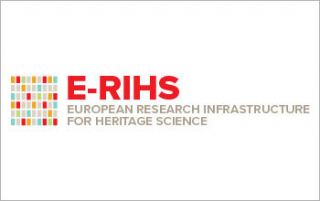On 29 – 31 March, ICCROM participated in a series of planning meetings in Florence, Italy for the E-RIHS project for heritage science in collaboration with CNR (Consiglio Nazionale delle Ricerche) and a range of other institutional partners.
E-RIHS is a pan- European distributed research infrastructure, with laboratories and research units aggregated in national nodes and regional hubs, which offers knowledge expertise and use of state-of-the-art instrumentation, innovative investigation methodologies and access to scientific data. The infrastructure is organized in four main platforms: a mobile infrastructure (Molab), including portable instrumentation for in – situ (on the spot) non-invasive and non-destructive analyses, a fixed infrastructure (Fixlab), consisting of large-scale instrumentation, such as synchrotrons or accelerators, archives of data (Archlab), containing valuable and unique information hosted in museums, galleries and research institutes, and Digilab, for providing direct access to scientific data and information stored in databases, digital libraries and knowledge repositories.
The E-RIHS consortium includes institutions representing fifteen EU members of the European Union and Israel and is led by the CNR – National Research Council of Italy. Researchers from the humanities, natural sciences and engineering, such as art historians, archaeologists, architects, paleo-anthropologists, restorers, curators, computer scientists, chemists and physicists, unite their efforts to develop together the emerging discipline of heritage science.
ICCROM’s participation in E-RIHS is intended to build on and amplify the work of ICCROM’s 2013 Forum on Conservation Science. It takes an active role in E-RIHS by extending its reach to countries outside the European Union, with the long-term vision to transform E-RIHS into a global research institution.
The European Commission approved the allocation of ca. 4 million Euros towards the establishment of E-RIHS. Its preparatory phase (E-RIHSPP) is funded through the program for research and innovation H2020 -INFRADEV-2016-2017 (Development and long-term sustainability of new pan-European research infrastructures). The preparatory phase of E-RIHS started in January 2017 and will last for three years, during which functional aspects will be established, such as its governance, economic and sustainability plans, policies, training programs and above all the legal and operative steps needed for the creation of the European Research Infrastructure Consortium (ERIC). With support from the Ente Cassa di Risparmio di Firenze and the patronages of Regione Toscana and Florence municipality, the European candidate to host the legal and operative seat of E-RIHS is the city of Florence.
The kick-off meeting of E-RIHSPP (30-31 March 2017) was preceded by a one-day international workshop at the designated seat for E-RIHS in Florence, the ex-Monastery del Maglio. It opened with speeches by high profile political and administrative figures such as Dario Nardella, mayor of Florence, and Umberto Tombari, president of the Ente Cassa di Risparmio di Firenze. The national and international dimensions of E-RIHS and its place in the global research landscape were drawn by Massimo Inguscio, president of CNR; Antonio Cesaro, Undersecretary of the Italian Ministry of Cultural Heritage and Tourism; Fabio Donato of the Ministry of Education, University and Research; and Antonio Di Giulio, Head of Unit Research Infrastructures, DG Research, Science & Innovation of the European Commission.
At the meeting, ICCROM’s Director-General, Stefano de Caro, detailed his vision for a global Heritage Science infrastructure. Delegates from the UK, France, Germany, Portugal, Greece and Belgium in turn presented their countries’ activities and initiatives towards the establishment of national nodes for E-RIHS.
The E-RIHS planning meeting was a side event to the G7 Culture meetings in Florence, held at the initiative of Italy’s Culture Minister, Dario Franceschini.

